Highlighting Women in Geobiology at MIT: Dr. Paula Welander

Current Role: I am currently an Assistant Professor in the Department of Earth System Science at Stanford.
Years in the Summons Lab: July 2010 through Dec 2012
Favorite Memories: I remember how cold the lab was! I always had to wear multiple sweatshirts under my lab coat and would have to go get tea in the middle of a lipid extraction to warm up. 🙂 But what I remember the most is the great interactions and conversations I had with the people in the lab. As microbiologist in an organic geochemistry lab, I often felt a bit out of my element, but everyone was so welcoming and super helpful in discussing my work.
Research Foci in the Summons Lab: In the Summons lab, I worked on sterol and hopanoid synthesis in the methane-consuming bacterium, Methylococcus capsulatus. I was able to develop a genetic experimental system in this organism that allowed me to identify and characterize the production of these cyclic triterpenoids in vivo.
Advice to Women Pursuing STEM: Seek out mentors that not only provide you with guidance and support in your research, but will also be an advocate for you. Roger is this kind of a mentor — he has been super supportive of me and my research ideas for many years. Also, find a support system that works for you — other people in your lab, friend and family outside of the lab, fellow grad students or postdocs in other departments, to help you navigate your career in STEM. I have found many women scientists on Twitter, particularly first-gen scientists and women of color that discuss the challenges they face in STEM, and it has been helpful for me to see that I am not the only one that faces these challenges.
I would also remind any young women and girls pursuing a STEM career to take time for themselves, away from the lab and the bench, and to do things that inspire them and that they love. Whether it is going for a run, doing science outreach, reading a funny book, going on a vacation, or binging a Netflix series, giving yourself the opportunity to take a break (and to not feel guilty about it) will, in the long run, make you a better (and happier) scientist.
Featured Publications: I have a 2013 PNAS paper with Roger covering what I worked on in his lab, identifying and characterizing the protein required to make 3-methylhopanoids in M. capsulatus. We also have a recent paper together in PNAS looking at archaeal membrane lipids — it was fun to publish with Roger again after 6 years on a completely different project!


